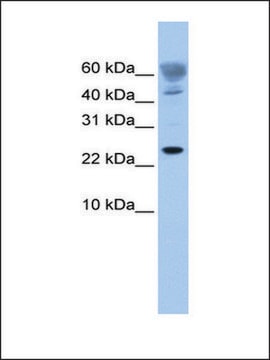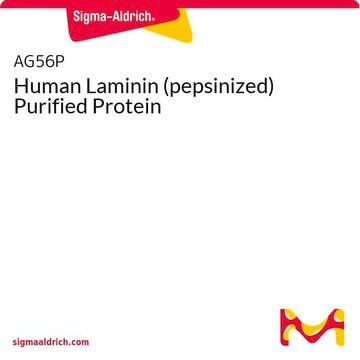ABC506
Anti-FUNDC1 Antibody
serum, from rabbit
Sinónimos:
FUN14 domain-containing protein 1
About This Item
Productos recomendados
origen biológico
rabbit
forma del anticuerpo
serum
tipo de anticuerpo
primary antibodies
clon
polyclonal
reactividad de especies
human, rat, mouse
técnicas
immunocytochemistry: suitable
immunoprecipitation (IP): suitable
western blot: suitable
Nº de acceso NCBI
Nº de acceso UniProt
Condiciones de envío
dry ice
modificación del objetivo postraduccional
unmodified
Información sobre el gen
human ... FUNDC1(139341)
Descripción general
Inmunógeno
Aplicación
Apoptosis & Cancer
Apoptosis - Additional
Western Blotting Analysis: A representatitive lot of this antibody was used to detect puried FUNDC1 protein from bacteria or HeLa cell lysates (Liu, L., et al. (2012) Nature Cell Biology. 14(2):177-185).
Immunocytochemistry Analysis: A representatitive lot of this antibody was used to detect FUNDC1 in HeLa cells (Liu, L., et al. (2012) Nature Cell Biology. 14(2):177-185.
Immunoprecipitation Analysis: A representatitive lot of this antibody was used to co-immunoprecipitate FUNDC1 with endogenous LC3 in HeLa cells that were exposed to normoxic or hypoxic conditions for 24 hrs (Liu, L., et al. (2012) Nature Cell Biology. 14(2):177-185).
Calidad
Western Blotting Analysis: A 1:1000 dilution of this antibody detected FUNDC1 in 10 µg of HepG2 cell lysate.
Descripción de destino
Uncharacterized bands may be visitible in some lysates.
Forma física
Almacenamiento y estabilidad
Handling Recommendations: Upon receipt and prior to removing the cap, centrifuge the vial and gently mix the solution. Aliquot into microcentrifuge tubes and store at -20°C. Avoid repeated freeze/thaw cycles, which may damage IgG and affect product performance.
Otras notas
Cláusula de descargo de responsabilidad
¿No encuentra el producto adecuado?
Pruebe nuestro Herramienta de selección de productos.
Opcional
Código de clase de almacenamiento
12 - Non Combustible Liquids
Clase de riesgo para el agua (WGK)
WGK 1
Punto de inflamabilidad (°F)
Not applicable
Punto de inflamabilidad (°C)
Not applicable
Certificados de análisis (COA)
Busque Certificados de análisis (COA) introduciendo el número de lote del producto. Los números de lote se encuentran en la etiqueta del producto después de las palabras «Lot» o «Batch»
¿Ya tiene este producto?
Encuentre la documentación para los productos que ha comprado recientemente en la Biblioteca de documentos.
Active Filters
Nuestro equipo de científicos tiene experiencia en todas las áreas de investigación: Ciencias de la vida, Ciencia de los materiales, Síntesis química, Cromatografía, Analítica y muchas otras.
Póngase en contacto con el Servicio técnico








